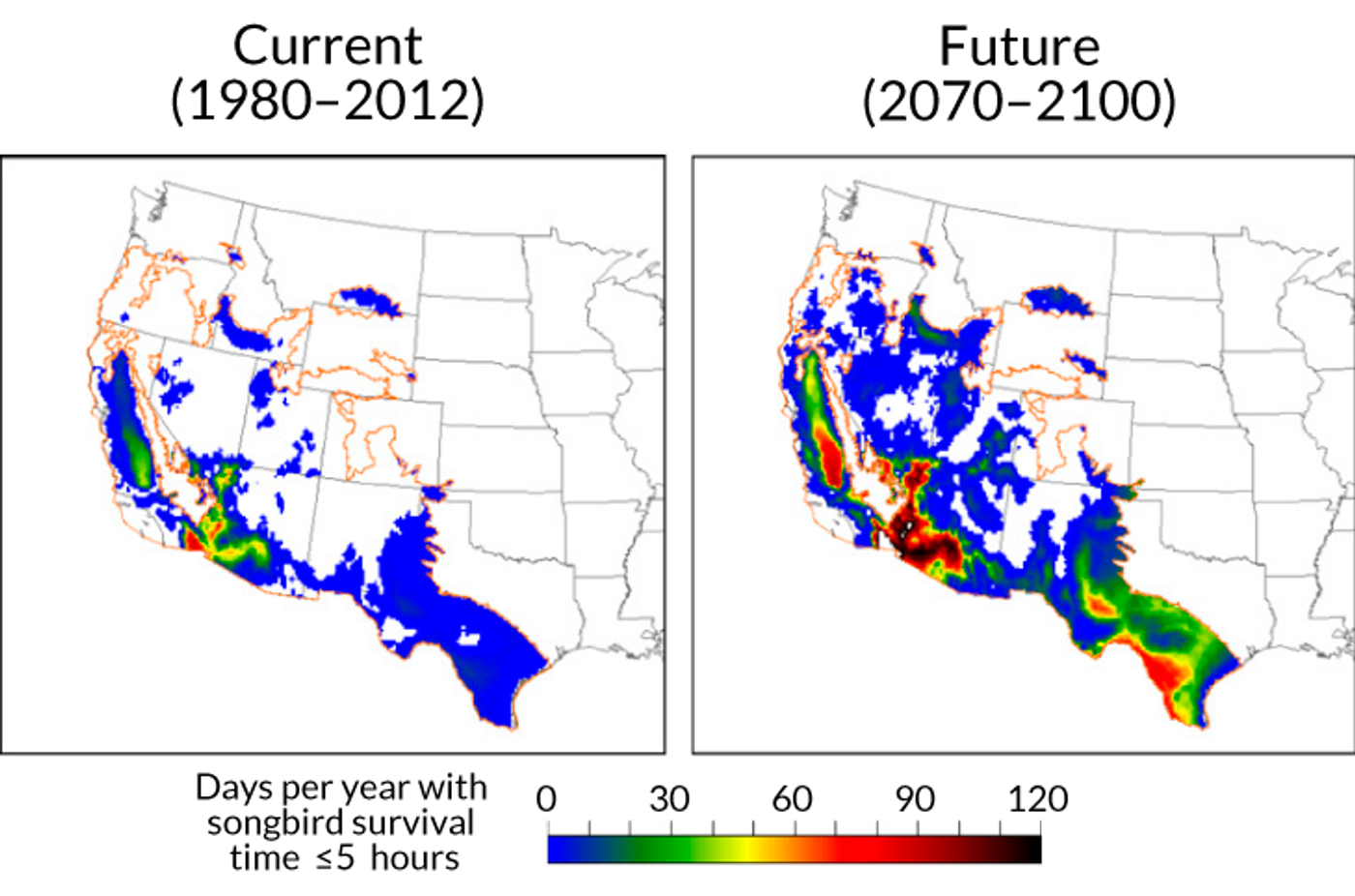Climate change is killing desert songbirds
Climate change is hitting some areas and species harder than others. Deserts in the Southwest of the United States are facing more frequent, intense and widespread heat waves, and the songbirds that live there aren’t managing well. One study even estimates that many desert songbirds will be extinct by the turn of the century. The reason why? Songbirds don’t sweat.
The birds’ physiology doesn’t allow them to perspire; instead, they pant when their temperature rises. This means that in the effort of trying to cool down, their bodies are losing water; during heat waves, they can lose more than 15% of their body mass through this process and die of dehydration.
The researchers are particular in their mission: “We ask how rates of EWL vary with temperature across species; how frequently, over what areas, and how rapidly lethal dehydration occurs; how EWL and die-off risk vary with body mass; and how die-off risk is affected by climate warming,” explains the study, which was published in the journal Proceedings of the National Academy of Sciences.
Smaller birds, in particular, are at a higher threat to die from dehydration because they lose water at a proportionally higher rate. Analyzing measured rates of evaporative water loss, hourly gridded weather data, a 4 °C warming scenario, and physiological models, the study reports that lethal conditions for these small birds could quadruple. Small species like the lesser goldfinch may experience on average 25 days per year of such lethal conditions by the end of the century. The researchers fear that even those birds that do manage to survive will suffer from geographic range limits and will likely alter daily activity patterns.
Larger songbirds won’t be out of the clear either though; “Warming by 4 °C greatly expands the extent, frequency, and intensity of dehydration risk, and introduces new threats to larger passerine birds, particularly those with limited geographic ranges,” reports the study. Bigger passerines such as Curve-billed thrashers and towhees will have to deal with smaller, more crowded ranges and unpredictable water sources.
As colors change from blue to red, the number of days per year (between April 1 and September 30) increases when the small songbird risks death within five hours. Photo: PNAS
The study urges that conservation efforts must take into consideration the impacts that a warming climate will have on desert songbirds. “This work underscores the importance of acute risks of high temperatures, particularly for small-bodied species, and suggests conservation of thermal refugia and water sources,” it states.
Sources: PNAS, Science News, Mother Jones









